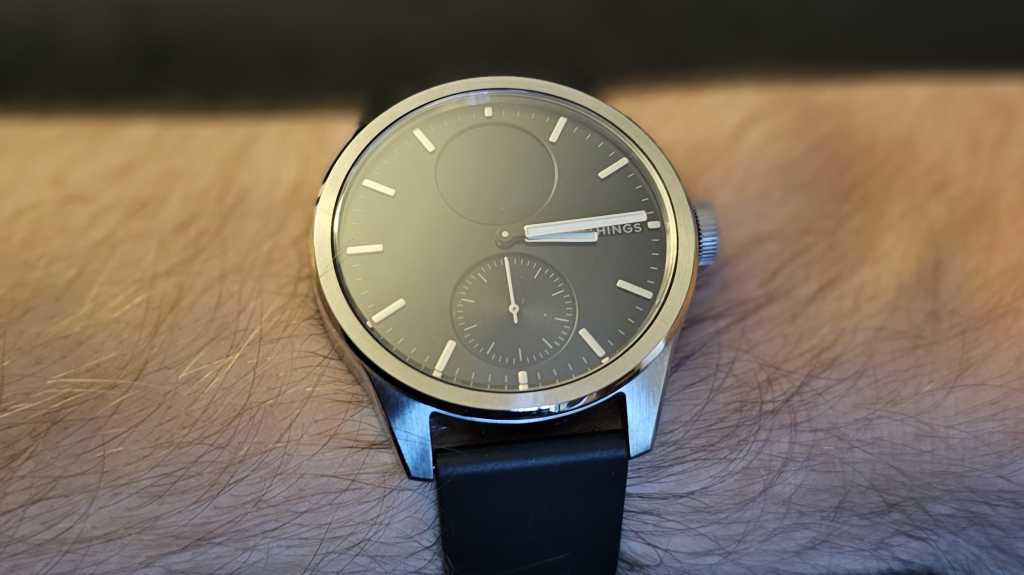Expert’s Rating
Pros
- Attractive design
- Clever display
- Excellent battery life
- Good sleep tracking
Cons
- Only basic workout data
- Unreliable heart rate monitoring
- No built-in GPS
Our Verdict
The Withings ScanWatch 2 is an impressive hybrid watch, combining a premium analogue design with advanced health sensors. But its fitness tracking and non-health features are a clear step down from most smartwatches.
Price When Reviewed
$349.95
Best Prices Today: Withings ScanWatch 2
$349.95

$349.95
When it comes to watches, French company Withings dares to be different. Typically, you have to decide between the classic design of an analogue watch or the health and fitness data of a smartwatch.
But with its ScanWatch line, Withings says: why not have both? 2020’s original established it as one of the leading hybrid watch makers, and the company is taking things to the next level three years later.
The updated ScanWatch 2 adds several key features, including 24/7 temperature tracking, menstrual tracking and heart rate variability. But all of these are also available on the £229.95/$249.95 ScanWatch Light.
Is it worth paying the £90/$100 premium for a larger face, ECGs, irregular heart rate notifications and blood oxygen monitoring? And should you really spend so much on a health-focused watch that can’t run any apps? I spent a few weeks with the ScanWatch 2 to find out.
Design & Build
- Classic watch design
- Tiny monochrome OLED display
- Impressive durability
The design of the ScanWatch 2 is the perfect fusion of old and new. It could easily be mistaken for a high-end analogue watch, with a blend of stainless steel and sapphire glass that looks and feels very premium. Unlike many smartwatches, it goes with pretty much any outfit.
It certainly helps that there are so many ways to customise it to your liking. The 42mm version is only available is available in only Black or Pearl White, but the 38mm version also lets you pick Sand or Blue.
Unfortunately, the latter will simply be too small for many people. Even as someone with relatively small wrists, I found the 42mm model to be just about right.
The design of the ScanWatch 2 is the perfect fusion of old and new
A silicone band is pre-installed when you take the ScanWatch 2 out of the box, and it roughly matches the colour of the watch itself. It’s a nice touch, though you can easily swap it out for a different colour or band made from leather (both sold separately).
The classic design of the watch means you might not even notice the display at first. But one press of the physical crown (or raise to wake, if enabled) and it bursts into life.
It’s a greyscale OLED panel, meaning you miss out on the vivid colours you get on many smartwatches. But it’s simply not necessary on such a small display, and an impressive 282ppi means text always looks sharp no matter what distance you’re looking at it from.
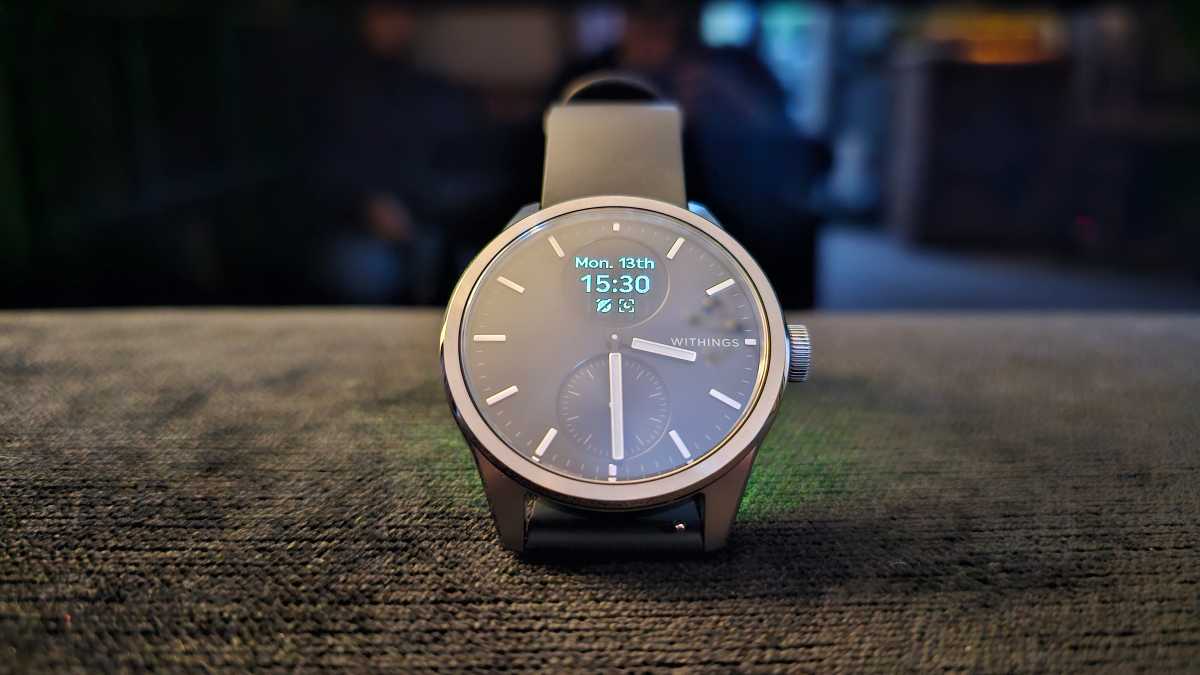
Anyron Copeman / Foundry
On the main screen, you’ll find only the basics: date, time and if you have an alarm set. But twisting the crown lets you cycle between a range of different features – the selection can be customised via the Withings companion app on your phone.
Navigation feels a little clunky, but it’s about as intuitive as you can get without a touchscreen or more physical buttons. Adding either of these would have detracted from the ScanWatch 2’s minimalist design, so I’m happy with the compromise.
While the screen is set behind the hands of the watch, you won’t have to worry about them getting in the way. If either happens to be covering it, they’ll move to the traditional 10 and 2 positions either side. With that in mind, I can see why Withings decided not to include a second hand.
The ScanWatch 2 is also impressively durable. That combination of stainless steel and sapphire glass makes it feel very tough and robust, but also resistant to cosmetic damage. Even after several weeks, it still looked good as new, with no visible chips or scratches.
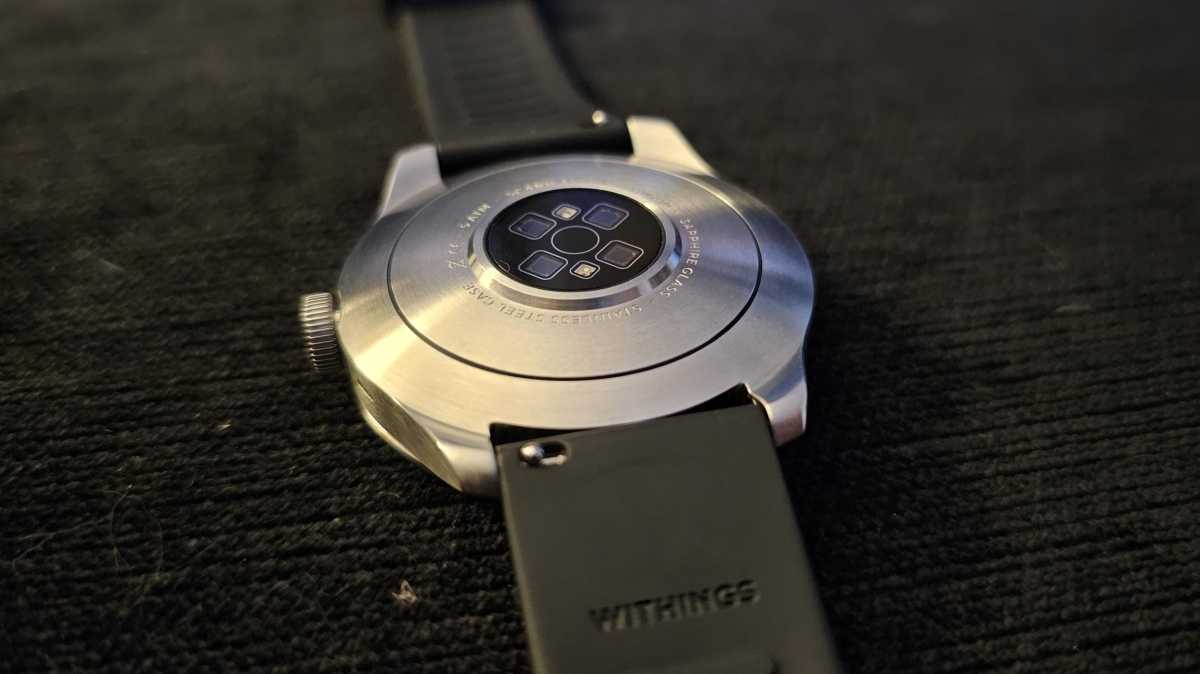
Anyron Copeman / Foundry
The watch also has 5 ATM water resistance, meaning it can withstand water pressure equivalent to a depth of around 50m. You can go swimming without having to worry.
It might be built tough, but the ScanWatch 2 remains relatively lightweight. The 38mm model weighs just 34.6g, while the 42mm version still isn’t heavy at 52.6g.
Fitness & Tracking
- Lots of health measurements available
- Disappointing workout data
- Good sleep tracking
Despite its classic design, the ScanWatch 2 offers an extensive range of health and fitness features.
All the regular monitoring is here, including steps, heart rate and blood oxygen levels. Each of these is simple to use and appears to be accurate most of the time.
But it’s the ability to take an electrocardiogram (ECG) that intrigued me most. Withings isn’t the only company to let you take ECGs using a watch – you’ve been able to on the Apple Watch since 2019. The ScanWatch 2 has received CE certification in Europe and approval from the FDA in the US for its ability to detect atrial fibrillation.
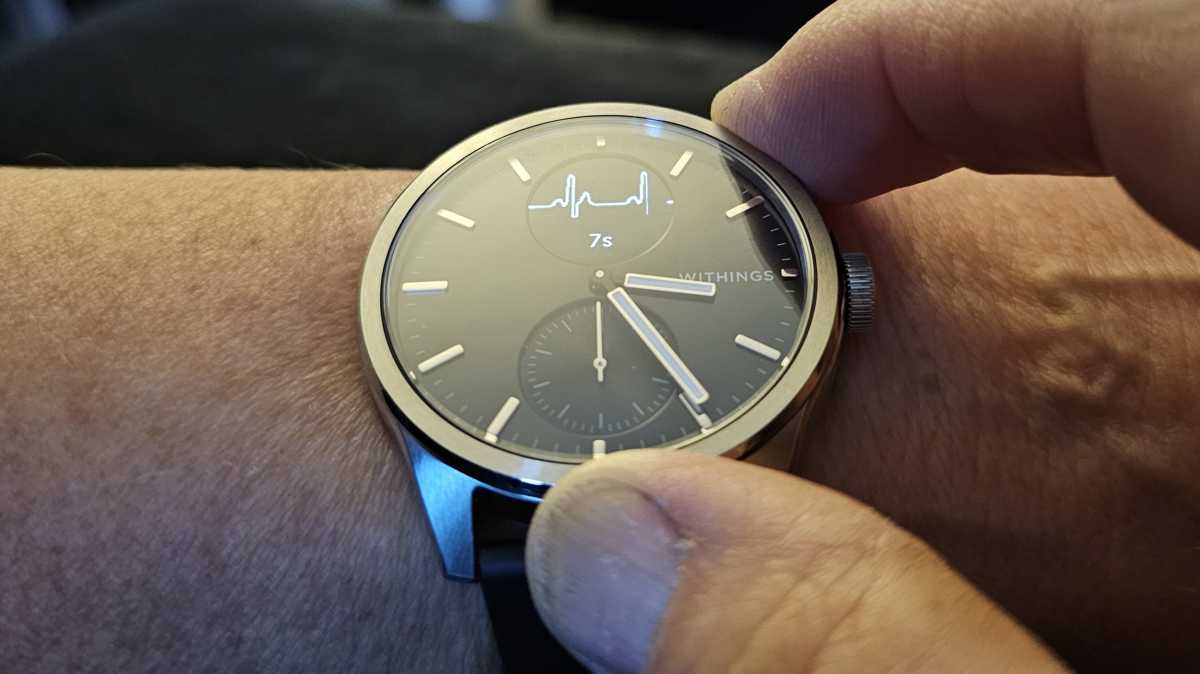
Anyron Copeman / Foundry
To take an ECG you simply press the top and bottom of the watch for 30 seconds. It’s an easy, painless way to get key information about your heart health that you can actually trust.
The ScanWatch 2 also supports 24/7 temperature tracking, including while working out. Over time, this can be used to estimate recovery time, while any deviations from your usual baseline could be an early sign of illness or other condition. But you need a large body of data for this to work effectively, which I haven’t been able to build up during testing.
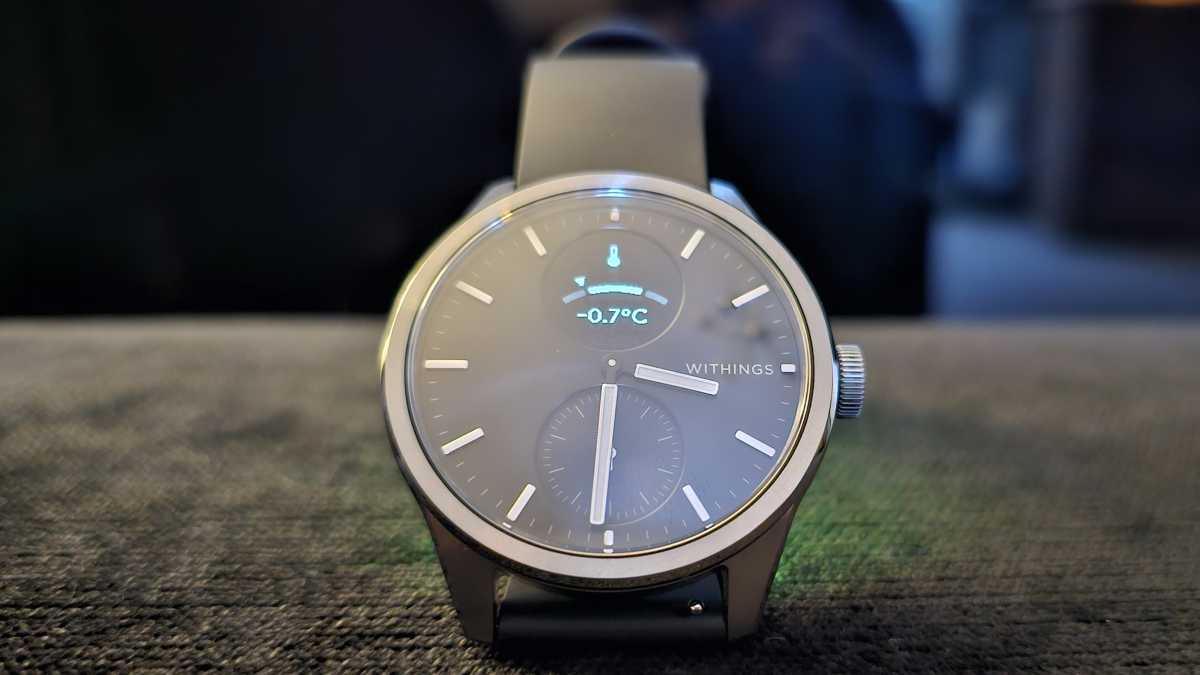
Anyron Copeman / Foundry
A total of 30 different workouts are supported, though only walking, running and swimming are tracked automatically. This feature worked very well when I tried, provided the same amount of data as if it were triggered manually.
Sadly, this still isn’t as much as I was hoping for. After a run and a walk, all you get is an overview of duration, distance covered, pace and heart rate. Key metrics such as stride length, elevation gain and VO2 Max are all missing (yet present on other smartwatches), which is a shame.
While the ScanWatch 2 can track your workouts, it’s by no means a great fitness watch.
And unless you’re connected to a phone with location services turned on, you won’t be able to see where you’ve been. The lack of built-in GPS is frustrating at this price.
Plus, the data you get after a swim session is even more basic. It’s just the total duration, estimated calories burned and heart rate information. The latter wasn’t even reliable – despite supposedly monitoring throughout my 35 minutes in the pool, data was only actually recorded around a third of the time.
So, while the ScanWatch 2 can track your workouts, it’s by no means a great fitness watch.
Sleep tracking is more impressive. Each morning you’ll get a comprehensive overview of when you were in light sleep, deep sleep and awake, plus total time asleep and if there were any interruptions. For each of these, you’ll be told whether this is good or needs improvement.
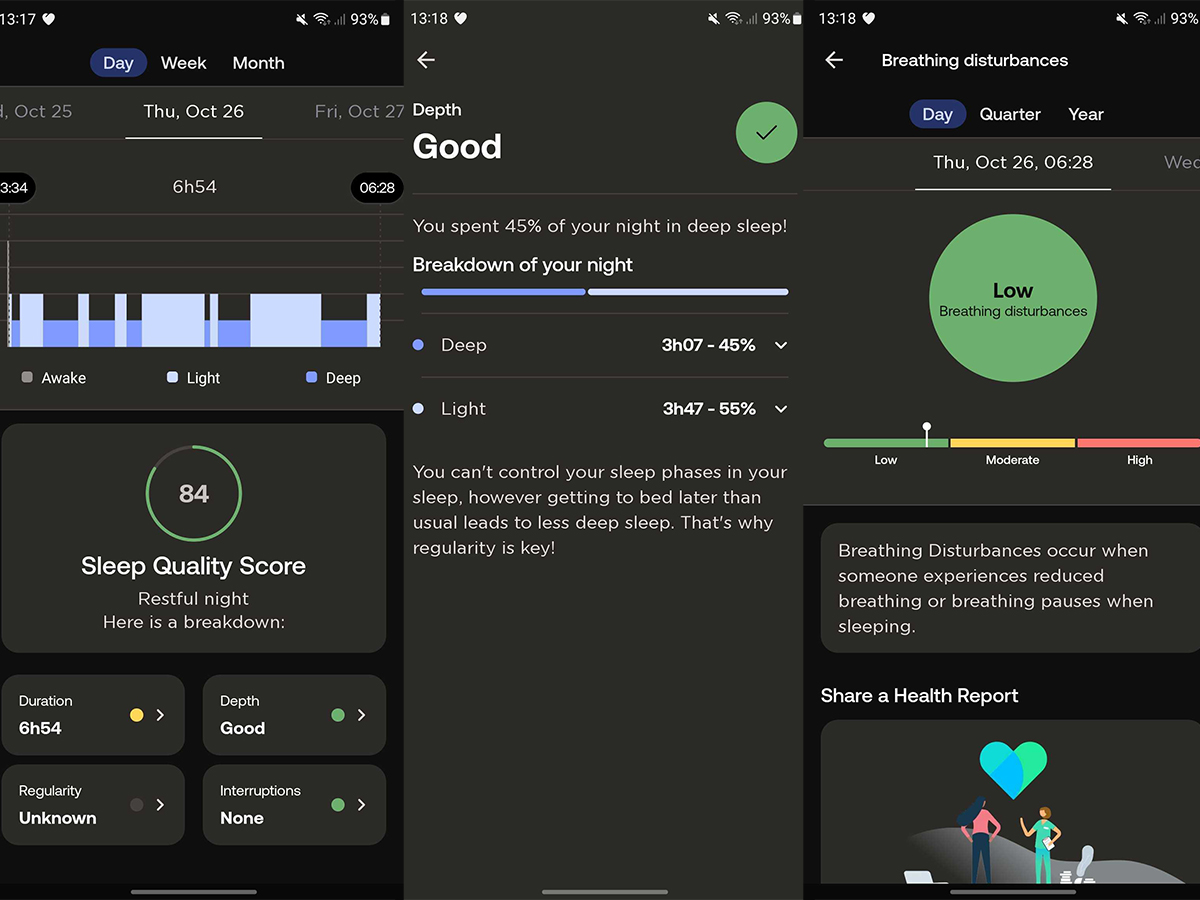
Anyron Copeman / Foundry
Heart rate data is also collected, alongside blood oxygen levels if you choose to enable it. The latter can be used to detect any breathing disturbances during the night.
All of this contributes to an overall ‘Sleep Quality Score’ out of 100. The only thing missing is REM sleep which is tracked by quite a few other smartwatches and fitness bands: Withings just reports deep and light sleep.
That’s not the end of the health features, though. The ScanWatch 2 can be used for breathing exercises and menstrual tracking, with the latter making use of a variety of on-device sensors. I can’t comment on its effectiveness, though.
Smartwatch features
- Alarm, timer & stopwatch tools
- Support for calls and notifications
- No third-party app support
With such a small monochrome display, the ScanWatch 2’s non-health features are very limited.
In fact, the only other screen you can access direct from the watch is ‘Clock’, which includes an alarm, timer and stopwatch.
But while there’s no built-in speaker, a subtle vibration can still be used to notify you of incoming calls and notifications. It’s much more effective for the former, with the name of the caller shown clearly on the screen.
However, there’s simply not enough space to comfortably display notifications. It can take several seconds for the full message to appear, and some longer notifications don’t fully display. In many cases, it’s just a prompt to pick up your phone.
With such a small monochrome display, the ScanWatch 2’s non-health features are very limited
Calls and notifications rely on you being connected to a phone via the Withings app. Unlike some smartphones, this works on both the iPhone and Android phones, with no features reserved for one or the other.
There’s a lot going on in the app, but I found it relatively straightforward to use. The ScanWatch 2 automatically syncs data every time it’s connected, with information split into three main tabs: Home, Measure and Achieve.
Measure will be the most useful for most people, allowing you to take a deep dive into key health metrics.

Anyron Copeman / Foundry
But the Achieve tab is almost exclusively reserved for Withings+ members, and includes extra health insights and programs to guide your day-to-day health. After a three-month free trial, a subscription costs £8.95/$9.95 per month or £89.50/$99.50 per year.
It’s also worth noting a few key features that the ScanWatch 2 lacks compared to other smartwatches. There’s no support for third-party apps, mobile payments or even changing watch faces, but this comes with the territory as a hybrid watch.
Battery Life & Charging
- Up to 30 days claimed battery life
- 7-10 days more realistic for most people
- Approx. 2 hours for full charge
Battery life is one of the ScanWatch 2’s biggest strengths. Withings says you can get up to 30 days on a single charge, but that’s with respiratory rate scanning turned off and limited workout tracking.
Instead, a more realistic figure is less than half of that. Even if you work out every day and wear it in bed at night, you’ll be able to get at least a full week of battery life – Fitbit territory.
Not having to worry constantly about how much battery was left is one of the best things about the ScanWatch 2
That’s in line with the more affordable ScanWatch Light, but far better than you’ll get on most smartwatches. Not having to worry constantly about how much battery was left is one of the best things about the ScanWatch 2.
When you do eventually need to charge, it’s only possible via a proprietary USB-C to USB-A dock. It’s a little fiddly to use, but charging speeds are decent. Withings claim of a full charge in 2 hours is roughly accurate, which isn’t bad at all when you consider how long it lasts.

Anyron Copeman / Foundry
Price & Availability
At launch, the ScanWatch 2 cost £319.95/$349.95. Both the 38mm and 42mm sizes cost the same price.
You can buy one from Withings UK, Withings US and several third-party retailers.
That’s significantly more expensive than both 2020’s original ScanWatch (from £249/$279) and the ScanWatch Light (£229.95/$249.95).
In fact, that price puts the ScanWatch 2 right in line with some of the best smartwatches you can buy, including the Google Pixel Watch 2 (from £349/$349), the Samsung Galaxy Watch 6 Classic (from £369/$399.99) and the Apple Watch 9 (from £399/$399).
Should you buy the Withings ScanWatch 2?
Possibly, but only if you’re looking for a very specific kind of smartwatch.
The ScanWatch 2 is an attractive, premium wearable that cleverly incorporates a range of health and fitness tracking. A variety of sensors enables a detailed overview of your health, while sleep tracking is impressive.
However, data from workouts is relatively basic and often incomplete. If you’re serious about fitness, this isn’t the watch for you. And the lack of built-in GPS and most other smartwatch features is harder to justify at this premium price.
The…
